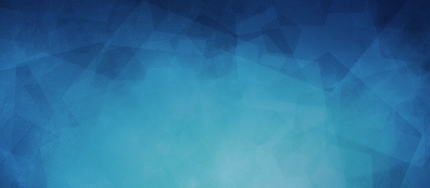
Designing a Custom Label for Optimal Print Results
Before you start designing your label artwork, it would be beneficial to contact our customer service team for a listing of the available cutting die shapes and sizes that we have stocked in-house. Custom cutting dies can be created for you if you don’t find the cutting die you want (prices vary). Below is a breakdown of the technical requirements needed to design label artwork that is suitable for printing. If you have any questions about artwork specifications pertinent to your order, please call your dedicated customer service rep at 1-800-475-2235.
Software Compatibility
- Our preferred file format is Adobe Illustrator (.ai). If you are using any other software for your labels, please consult your customer service or sales rep to verify compatibility.
- Please do not set type or layout your label in Adobe InDesign or other page layout based programs. Instead, set type and compose your artwork file in Adobe Illustrator. (When labels are created in InDesign, exporting the files create issues with slicing the artwork, gradients, drop shadows, images, and colors.)
- Please do not set type or layout your label in Adobe Photoshop or other pixel-based programs. Set type and compose the file in Illustrator. Use PSD for the background image. The file should be in CMYK format, at least 300 DPI (dots per inch), and your label has a bleed of 0.0625″ (1/16th) on all sides past the dieline. (A ‘bleed’ is when the artwork extends beyond the edge of where your label will be cut so that there are no white spaces around the label’s borders.)
- If you must use an alternative vector-based software application, you must export a CMYK-print quality (.pdf) file. Make sure the following are in the PDF’s file settings: embed thumbnail, retain file colors & editability, no compression, downsample to 300 DPI, no color conversion, and no passwords.
Artwork Setup
- Always design label artwork in the CMYK colorspace – RGB flat files CANNOT BE USED. If the artwork is in RGB, our artists must convert it to CMYK, then get the artwork color shift approved by the client before sending it in for printing.
- Always send linked files with your label file. Where postcript fonts have been used, include both printer and screen fonts. We recommend sanserif font for small type (4.5 to 7pt).
- Please remember to convert ALL text to outlines (make sure that you have carefully proofread your label art before sending it to us!).
- Always provide 0.0625″ (1/16th-inch) bleed on all sides. This means that the artwork/color extends past the dieline to ensure that the ink reaches all the way to the label’s edges.
- PNG and GIF files cannot be used to produce quality labels (this includes low res or web .jpg files). JPG files must be in CMYK format with a min 300 DPI with no text – the JPG image should solely be for background usage from the original high res file.
Image Area
- Safety Area: Maintain a 1/16″ margin from the dieline, unless it’s an intentional bleed.
- Original Art/Scans/Text: Please include placed graphics and photographs with your art. Scan resolution should be a minimum of 300 DPI at final scale. When supplying paragraphs of text that have been rasterized into a bitmap format (1200 DPI), please include original text (.txt) files, as well as the font files.
- Type Specs: 4.5pt positive minimum. 6pt bold for reversed text. Please avoid using fine reverse type because 4 color process printing can’t build on type less than 12pts. When supplying text, please convert text to outlines/curves, or send the actual font files from your computer.
- Color Specifications: Specify required Pantone Coated Swatch® swatch numbers on spot color artwork.
- Trapping: It’s not necessary to add traps to your artwork. Minimum trap and hold back requirements 0.5pt.
- Lines/Rules: Minimum setting .35pt. When printing negative (reverse) lines/rules, .5 pt is the minimum recommended.
- Nutrition Facts: Please contact the Food and Drug Administration for necessary requirements needed for your particular application.
- Barcodes/UPCs: Bar width reduction should be at .002″ when created at 80%, and .003″ when created at 100%. We do not guarantee scanability of barcodes smaller than 80% scale. Box width minimum is 1.275″.
- Color Matching: Process color matches cannot be made to your laser or inkjet printouts. You must provide a sample to match prior to proofing if you are requiring us to match a previously printed label.
Questions/Additional Info?
We would like to help. Please contact your customer service representative or visit the Guides section of our website to view support documents.
To complete your job cost-effectively, quickly and with the highest degree of quality, please follow our flexographic computer specifications. We will finish incomplete flexo artwork for an additional cost at current market rates.
Submitting Artwork
You may upload your artwork via our art upload tool. New customers can create an account; existing customers will need their company ID to tie the artwork to the account. Check out our submitting artwork tips if you need help or have questions about the submission process.
Editor’s Note: This post was originally published in November 2013 and has been updated for accuracy and comprehensiveness.


